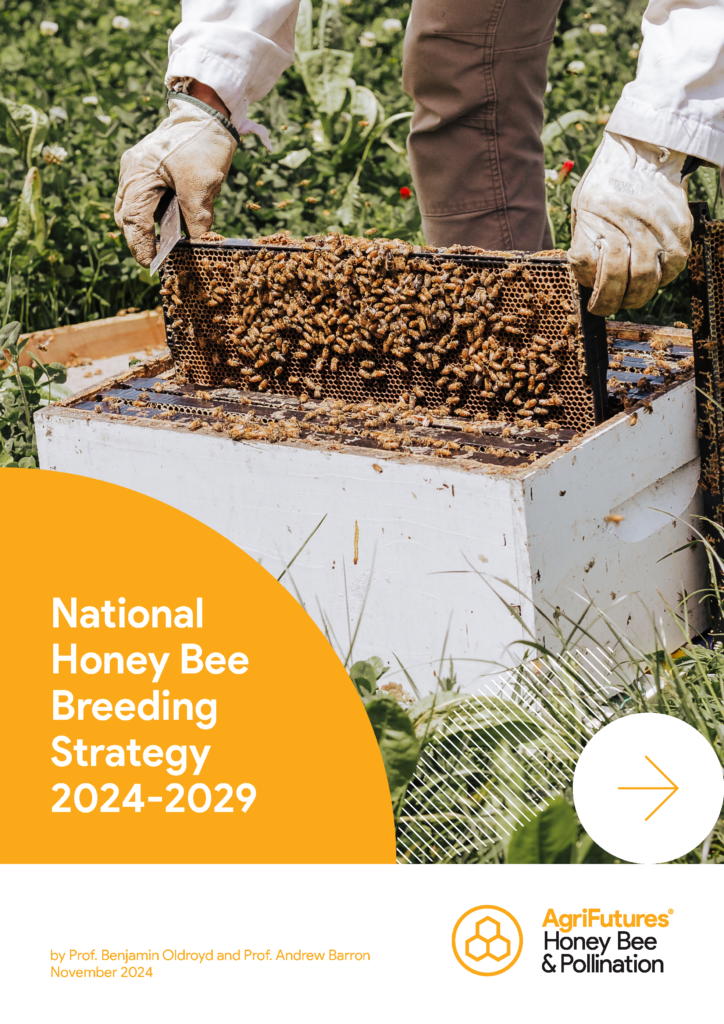Determining the impact of Varroa on virus transmission in Australian bees
This research aimed to contribute to ongoing surveillance of the Australian honey bee virus landscape as varroa establishes and spreads.
 HONEY BEE & POLLINATION
HONEY BEE & POLLINATION 
16 pages
Published: 18 Nov 2024
Author(s): Benjamin Oldroyd, Andrew Barron
ISBN: 978-1-76053-533-9
Download report PDF
DownloadPurchase a hard copy - AUD $50
In all livestock industries, genetic selection has been used to increase animal productivity and, by extension, enterprise profitability. The Australian honey bee industry is no different. Breeders have been selecting their queens based on three key traits that enhance the productivity and profitability of beekeeping businesses: honey production, bee health and docility. The continued development of a well-resourced genetic selection program is essential to maintain a viable beekeeping industry in Australia. The ongoing viability of the industry is strongly in the national interest, since about one-third of agricultural crops benefit from animal (mostly honey bee) pollination. Some crops, notably almonds, are 100% dependent on honey bee pollination.
It is important to understand that selection for varroa resistance or tolerance cannot exist in isolation from other commercial traits. When selection is focused on varroa resistance alone, other economic traits, notably honey production and docility, decline. Therefore, selection for varroa resistance must go hand in hand with selection for production and docility.
A national honey bee breeding strategy (hereafter the Breeding Strategy) will allow the Australian honey bee industry to invest in breeding technologies, such as genomics, to increase their confidence in genetic selection for more productive queens that are resistant to varroa. The Breeding Strategy will guide further investment and growth of a coordinated honey bee stock improvement effort to ensure it meets the needs of the industry and breeders alike. Through investing in genetic selection, the industry will become more profitable and sustainable, will be able to ensure a reliable supply of colonies for crop pollination tasks, and will enable other agricultural industries to expand through enhanced pollination security.